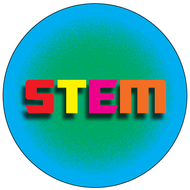Robots & Robotics - An Introduction to Robotic Technology
(View Complete Item Description)People have a lot of different ideas about what the future will be like. Will there be flying cars? Will people live on the Moon? One thing that most people agree on is that robots will probably be very important. So let's have a look at robots - how they work, how they're made and how they're going to change the world. Robot technology is already changing our World. This program provides an easy-to-understand introduction to the history and applications of robots, along with the basic principles of robot Control Theory and engineering. Robots are some of the most complicated machines to have ever been made, but the basic principles of how they work can be quite easy to understand. Robot designs can be broken down into two different general types: Open Loop and Closed Loop. Open-loop robots repeat the same sequence of pre-programmed actions, no matter what. This type is commonly used by industrial robots, or other robots that only do one job in a very structured environment. They can be very easy to make, since they only do one thing. Closed-loop systems are much more complicated. Instead of just going through a list of pre-programmed actions, the robot looks at the world around it and changes its behavior depending on what it sees. Subjects covered include: A brief history of Robots, how Robots work, types of Robots, the Future of Robots.




















